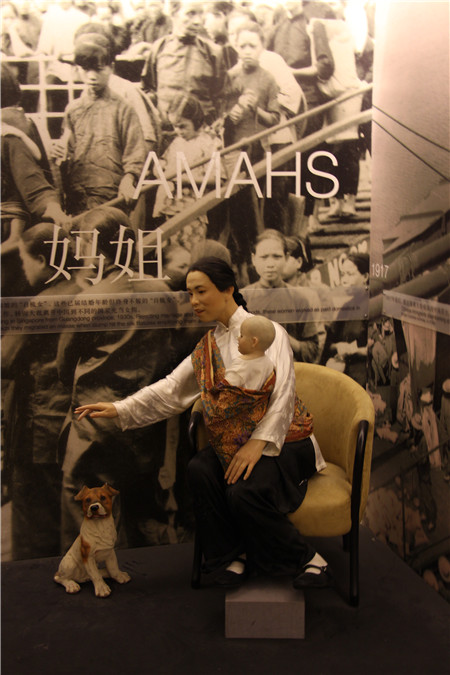 |
|
Mah-jie, meaning mom-sister, were domestic helpers from China. [Photo by Tan Wei Ann/For China Daily] |
"The color red was to alert people and thus reduce the chances of accidents at the workplace," she says.
"And, apart from sheltering them from the scorching sun in the tropical country, the starched hat could also be used to store cigarettes, matches and money."
"Coming to Singapore - then Malaya - in the 1920s and 1930s and working there until around the 1970s, these women, both the mah-jie and the Samsui women, helped shape the country in a profound way.
"For those who know their stories, these women are an integral part of the contemporary history of Singapore," says Chu, pointing to the stone sculptures of Samsui women erected in front of the Singapore City Gallery on 45 Maxwell Road, where one can get an overview of how the city-state evolved and reinvented itself over the past 100 years.
The Gallery is located on the southeastern end of Chinatown, where early Chinese migrants used to gather.
Without relatives in Singapore, these two groups of women turned to their own small but closely-knit communities for solace.
Members of the same group often jointly rented rooms in Chinatown as living quarters.
|
|
|
|
|
|
|
|
